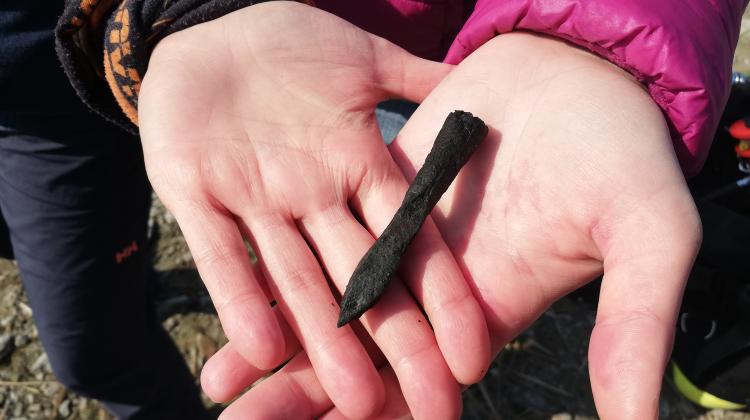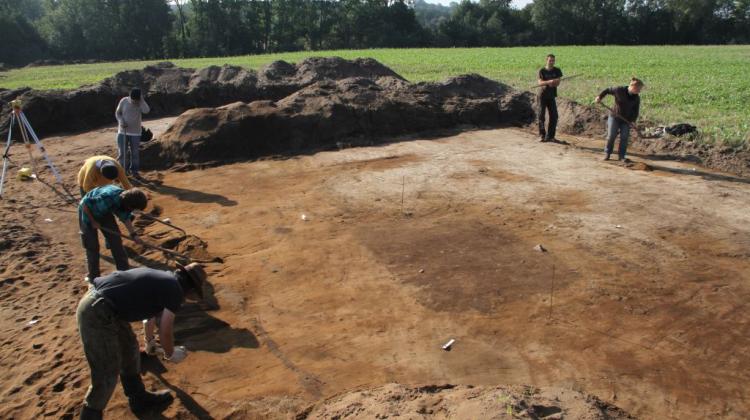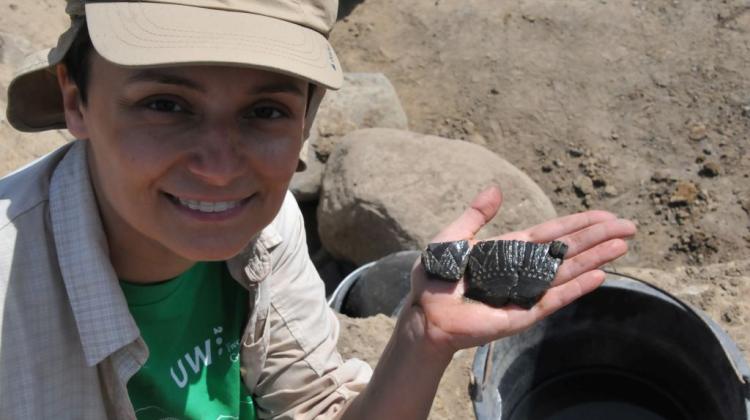Polish archaeologists on Bornholm
Relics that are evidence of beliefs and rituals performed by inhabitants of the island of Bornholm before 5.5 thousand years have been discovered by the archaeologists from Warsaw during the ongoing excavations in Vasagard.
The research project is the result of several years of collaboration between the Institute of Archaeology of the University of Warsaw and Bornholms Museum. As part of the agreement, archaeology students of IA UW come each year to the Danish island for excavations and practice their skills. This year, they cooperate with students from the University of Copenhagen.
The study site - Vasagard - puzzles archaeologists to this day. It was probably the site of a sun worship temple, surrounded by palisades. This is evidenced by the entrance to the complex, located in the direction of the sunrise during the solstice or equinox. During this season of excavations, archaeologists have discovered several ditches, in which, in their opinion, bodies of the deceased were placed to be decomposed. Then the bones were transferred to proper burial chambers.
"In the ditches we find large amounts of pottery, animal bones and damaged stone sun discs. The function of the latter has not been fully explained yet" - told PAP Janusz Janowski, head of the Polish expedition.
Sun discs are small pebbles, which were given a disc shape. Images of sun rays were carved on one side. Similar finds have already been discovered in nearby Rispebjerg, which served as a sun temple. Those discovered by the Polish-Danish team were mostly burnt and often deliberately broken, probably in connection with performed rituals.
"In addition to the excavations, we document monuments in 3D laser scanning technology - this includes sun discs and tombs found at the site: box and passage tomb from different periods. These finds indicate that human activity at the site continued for hundreds of years" - said Marta Bura, head of the 3D Scanners Lab at IA UW. Scientists have the opportunity to test the latest scanner Leica P 30, the device that had its world premiere in April this year.
In previous years, archaeologists from the University of Warsaw conducted research in the castle Hammershus, one of the most recognizable historic objects on Bornholm, and one of the largest of its kind in Scandinavia.
PAP - Science and Scholarship in Poland
szz/ mki/ mrt/
tr. RL
Przed dodaniem komentarza prosimy o zapoznanie z Regulaminem forum serwisu Nauka w Polsce.


















